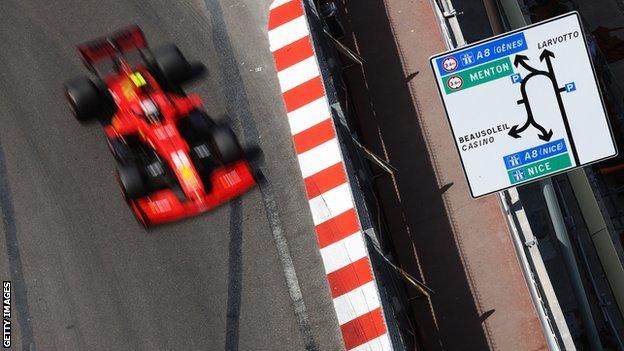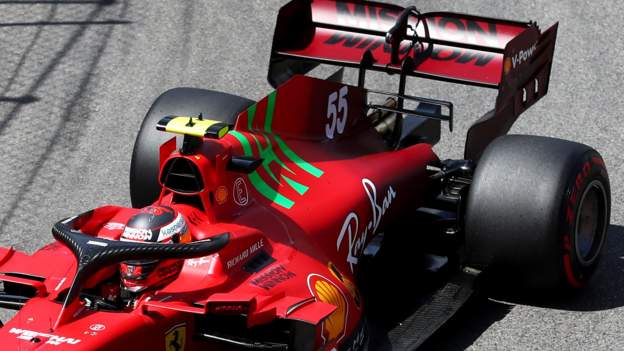
Mercedes have refused to rule out lodging a protest if rival teams run flexible rear wings at the forthcoming Azerbaijan Grand Prix.
Technical director James Allison said Mercedes would be keeping an eye on rival cars in Baku on 4-6 June.
“We’ll see what we see, and figure out what to do when we see it,” he said.
Asked if they were considering a protest if a car ran an obviously flexible rear wing, Allison said: “I’m not saying anything.”
Team principal Toto Wolff said last week at the Monaco Grand Prix that the directive from the FIA, motorsport’s world governing body, introducing the stiffer tests “says the movement of some rear wings has been judged as excessive – so teams who would run these kinds of wings are prone to being protested”.
Ferrari have admitted to running flexible rear wings this year, while Red Bull and Alpine have both said their cars will have to be modified to comply with the new rules when they are introduced for the French Grand Prix on 18-20 June.
Wolff said the Mercedes rear wing was “extremely rigid”, adding: “The new test is a half-baked solution which gives us an opportunity, and the whole thing can soften and bend more in the future.”
What do flexi-wings do?
The flexible wings bend back on the straights, reducing drag and increasing straight-line speed, before snapping back into place for optimum downforce in the corners.
This allows teams to run more downforce on their cars in the corners while not suffering the drag penalty this would usually cause on the straight, or to increase straight-line speed while maintaining satisfactory levels of downforce.
Allison pointed out that the Baku track “certainly is a track where they are particularly effective”.
This is because it has the longest pit ‘straight’ on the calendar, in addition to a series of right-angled corners and a low-grip surface where more downforce pays dividends in terms of grip.
Why is the test not already in place?
The decision to delay the imposition of the stiffer load tests aimed at preventing the use of flexible wings was made to give the teams time to adjust their cars to the change.
But Wolff has called the decision “incomprehensible”, saying it is a “messy situation” that leaves F1 “in no-man’s land”.
McLaren team principal Andreas Seidl has also said he “strong disagreed” with the delay.
Red Bull team principal Christian Horner described the tougher tests as “effectively a change in regulations”, a view shared by Alpine chief executive officer Laurent Rossi and Alfa Romeo team principal Frederic Vasseur.
Vasseur described the FIA’s move mid-season as “a joke”.
However, so-called “moveable aerodynamic devices” have been banned in F1 for decades.
Article 3.8 of the F1 technical regulations states that bodywork must be “rigidly secured to the entirely sprung part of the car” and “remain immobile in relation to the sprung part of the car”.
Seidl said: “The tests mentioned in the regulations at the moment are in place to, let’s say, additionally support [the] FIA to check in a straightforward way if the cars are complying with the regulations.
“But it doesn’t mean that only these tests are the criteria as to whether the car is legal or not.”


